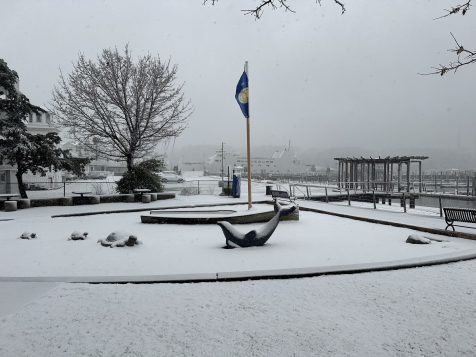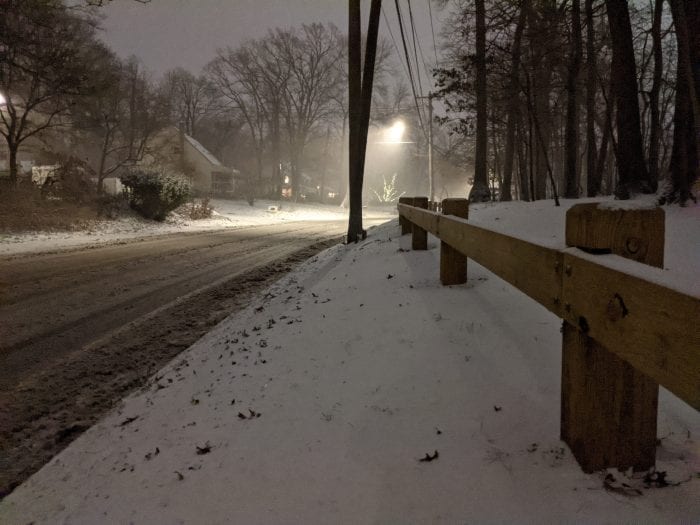With a snowstorm the Weather Channel has already named Gail bearing down on Long Island, packing 50 mph winds and predicted snowfalls of around a foot, Suffolk County officials urged residents to avoid the Wednesday evening and Thursday morning commutes, if possible.
Suffolk County Police Department Chief Stuart Cameron said people driving in the snow during either commute could create dangerous conditions.
“People haven’t driven in snow for some time,” Cameron said Tuesday at a press conference at the Department of Public Works Yard Salt Barn in Commack. “If you can work remotely tomorrow, I would advise that.”
Similarly, Chief Cameron said the Thursday morning commute could be “much more impacted” and suggested “if you can stay home, that would be great.”
Additionally, he said temperatures close to freezing might create the kind of conditions that favors heavy, wet snow.
“If you have health conditions, it might be wise to pay someone to clear your driveway,” Chief Cameron suggested.
County Executive Steve Bellone (D) said last year was a “light” year for snow, which means that the supply of salt for clearing snow-covered roadways is “plentiful right now.”
As of early on Tuesday, Bellone said the forecast called for snow to start around 2 p.m. and should worsen through the evening.
The combination of high winds, sleet and snow increases the possibility of power outages.
In a press release, PSEG indicated that the conditions could cause tree limbs to break and pull down wires.
PSEG is bringing in mutual aid crews to work with the company’s personnel on the island.
“Our workforce is performing system checks and logistics checks to ensure the availability of critical materials, fuel and other supplies,” John O’Connell, vice president of Transmission & Distribution at PSEG LI said in a statement.
During the storm, Long Island may create an enhancement to the outage communications process. With this enhancement, customers can contact the Call Center early in the storm to receive an “Assessing Conditions” message, rather than an estimated time of restoration.
This will give crews time to assess storm impact before setting power restoration expectations.
This procedural change comes after PSEG LI encountered numerous communication problems amid Tropical Storm Isaias earlier this year, during which customers couldn’t contact the utility and PSEG provided misleading estimated times to restore power.
PSEG said residents can report outages by texting OUT to PSEGLI. People can also report outages through the app, website at www.psegliny.com/outages or with their voice using Amazon Alexa or Google Assistant app on their smartphones.
Residents who would like to report an outage or downed wire can call the electric service number, at 800-490-0075.
Bellone said county officials would monitor the power restoration process.
“Through the emergency operation center, we will be working closely with PSEG, making sure they are doing everything they can to keep power on and to restore power if it does go out,” Bellone said.
The forecast conditions may mean that plowing could take longer, as drivers operate during white out conditions, Bellone said.
“It’s slow going in these kinds of conditions,” Bellone said.
Bellone said the crews are prepared and will work in overnight hours to make sure roadways are cleared.
Recognizing all the challenges 2020 has brought, Bellone said it is “not surprising as we get towards the end of this very strange year that we’ll have another first: our first pandemic snowstorm.”






























































